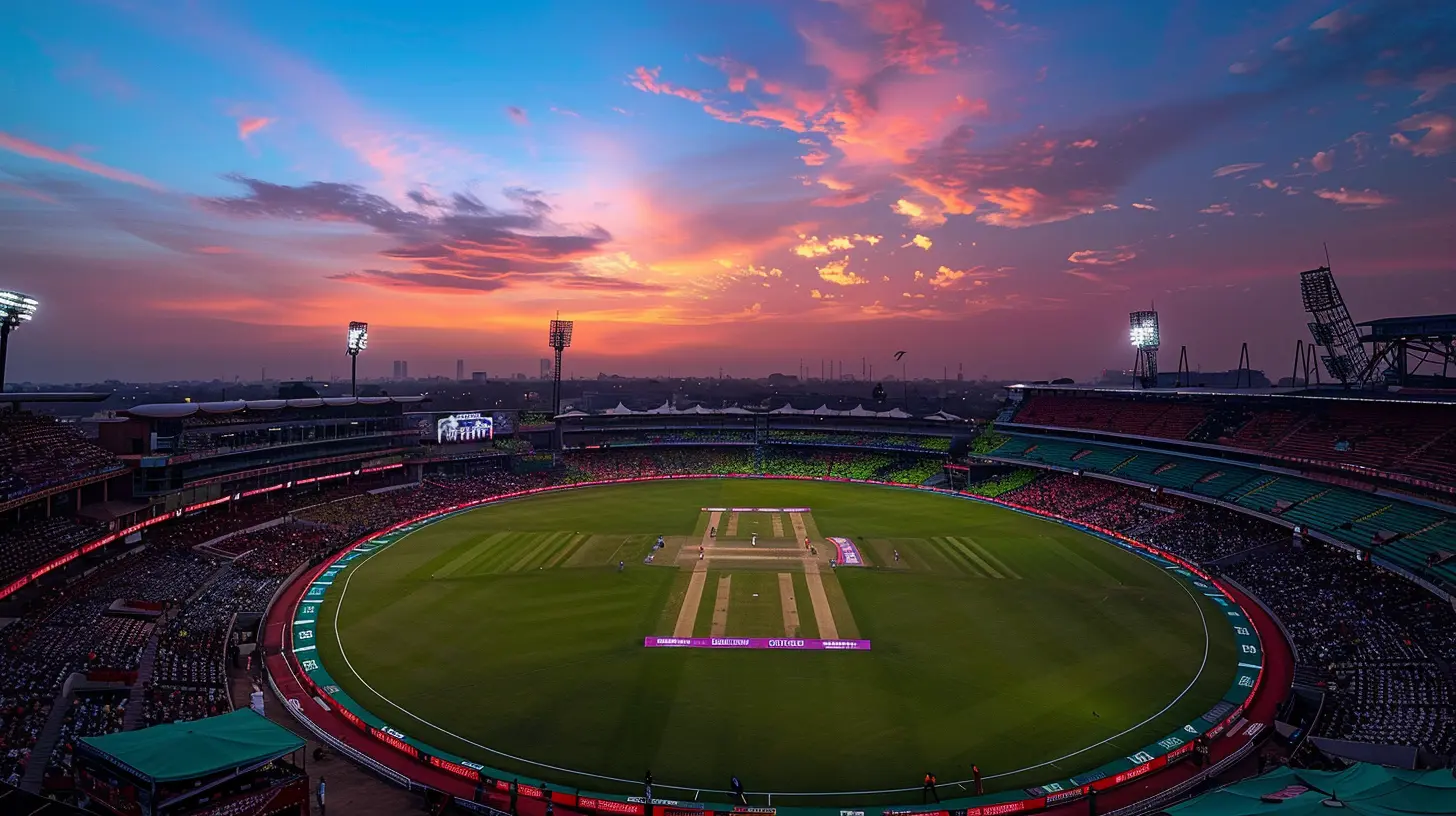T20 Cricket: Is It Changing the Way We See the Game?
12 August 2025
Cricket has always been a game of patience, class, and strategy. For decades, we watched legends like Sunil Gavaskar and Sir Geoffrey Boycott build innings brick by brick. Test cricket was the gold standard. Then came One-Day Internationals (ODIs), adding a splash of color and urgency. But now, the whole cricketing landscape has been shaken—by a hurricane called T20.
So, let’s talk. Is T20 cricket reshaping how we view the game we’ve cherished for over a century? The short answer? Yes. The long one? Well, let’s dive in.
A Lightning Bolt in a Gentle Breeze
If Test cricket is a symphony, T20 is a rock concert. It’s loud, it's fast, and it’s over before you run out of snacks.For the uninitiated, T20 (short for Twenty20) cricket is a format where each team gets just 20 overs to bat. That’s 120 balls per side—quick math. What this means is every ball, every shot, every moment counts. It’s like cricket on caffeine.
No slow starts. No playing out the first session. Just pure, unfiltered action.
Why the World Fell in Love With T20
Let’s be honest. We live in a world where nobody has time. Want to binge-watch a whole series? Cool, just give it to me in 20-minute episodes. Want to play a sport? Make it shorter, faster, and Instagram-worthy.T20 is tailor-made for this generation. It fits perfectly into an evening. There's drama, there's skill, and there's just enough time to squeeze in a pizza.
But it's not just the duration. It's the vibe.
Floodlights, music, cheerleaders, fireworks—it's not just a match, it’s a spectacle.
The Rise of Leagues: From IPL to The World
At the heart of this revolution lies the rise of franchise-based T20 leagues. The Indian Premier League (IPL) kicked off in 2008 and, boy, did it change everything.Suddenly, cricket wasn't just about nations. It was about cities, franchises, big-money deals, and fantasy leagues.
Along came the Big Bash (Australia), the Caribbean Premier League, the Pakistan Super League, and The Hundred (okay, not quite T20, but close). These tournaments became summer blockbusters.
Players became brands. Teenagers sat out boring lectures just to watch the auction. It was Cricket 2.0.
Skill Over Tradition?
Here’s a controversial take—T20 cricket has prioritized different skills. And some purists don’t like it.Technique? Important, yes. But innovation trumps tradition in T20. You’ll see switch-hits, reverse scoops, and ramp shots that would make Don Bradman shake his head.
Adaptability is the name of the game. The classic forward defensive? Respectful. But not very useful when you need 20 runs in the final over.
Batsmen aren’t the only ones showing off new tricks. Bowlers are developing slower balls, knuckleballs, and funky run-ups just to survive.
It’s high-risk, high-reward—a casino of cricket.
Has It Eroded Patience?
Let’s talk mindset. Because T20 cricket is changing how players, and even fans, think.Kids growing up now see AB de Villiers smashing a 30-ball century and think, “That’s normal.” So when they watch a Test match slog through a slow scoring rate, they’re like, “What’s the point?”
The slow burn of Test cricket isn’t for everyone anymore. And that’s okay... kind of. But if we're not careful, we might be losing the art of resilience, of spending six hours at the crease digging deep.
Cricket, after all, was once about survival before flair.
A New Breed of Cricketer
T20 has birthed a new breed of players—fitness-focused, aggressive, and fearless.Look at someone like Suryakumar Yadav or Glenn Maxwell. These guys don’t just play cricket—they perform. Every ball is an opportunity to innovate, create, and entertain.
Athleticism has never been more important. You dive, sprint, and leap like a cat on hot bricks. Fielding has gone from a side gig to a headline act.
There’s no room for laziness. No hiding. Every single ball is lit up on the scoreboard. Every miss, every drop—exposed in HD.
The Pros: Fast, Fun, and Financial Boon
There’s a lot to love about T20 cricket.- Accessibility: Great for newcomers. You don’t need to understand lbws and silly points to enjoy a six flying into the stands.
- Revenue: Let’s not pretend money doesn’t matter. T20 brought sponsors, ads, celebrities, and broadcasters running.
- Global Reach: Countries like Afghanistan, Nepal, and the USA are entering mainstream cricket—because of T20.
- Women’s Game Growth: The rise of T20 has boosted women’s cricket massively. The launch of leagues like the Women's Premier League (WPL) is a direct result.
The Flip Side: At What Cost?
It’s not all glitter and glamour.Critics point out that T20 cricket is elbowing Test cricket out of the spotlight. Young players are tempted by fame and fortune, often choosing franchise cricket over national duties.
Test cricket struggles to fill stadiums, while T20 tickets are sold out in minutes. That’s telling.
More T20 cricket also means more burnout. Players hopping from one league to another have barely any time to recover. Injuries go up, and quality can drop.
There’s also the concern of too much cricket. Oversaturation can kill the magic, like too much sugar in your coffee.
The Emotional Shift
One big, unnoticed change is the way fans emotionally connect with the game now.T20 is fun, but it’s fleeting. You cheer for sixes, scream at wickets, and it’s over in three hours.
But you don’t always cry with it. You don’t stay up all night worried about the next day’s session like in Tests. You don’t debate a single innings for days like you did with Rahul Dravid’s epic 180 at Eden Gardens.
T20 is thrilling, but is it moving? That’s the real question.
Is There Room for All Formats?
Now that’s the juicy debate. Can Test, ODI, and T20 coexist peacefully, or will one eat the rest?In reality, each format has its place:
- Test cricket for the purists who love the grind.
- ODIs for those who enjoy a narrative arc.
- T20s for pure, popcorn thrills.
The key lies in balance. Like a well-balanced diet, cricket needs all its flavors.
What the Future Looks Like
Looking ahead, T20 isn’t going anywhere. In fact, it’s going to get bigger.But the challenge is maintaining the soul of the game. Governing bodies like the ICC need to protect Test cricket, perhaps with better scheduling, more context (like the World Test Championship), and stronger marketing.
Franchise leagues may grow, but national cricket must remain the emotional home.
And most importantly, fans—we—need to keep the love alive. Not just for the fireworks, but for the first light of dawn at a Test ground, the sound of leather on willow, and the sheer poetry of the long game.
Final Thoughts: T20, A Blessing or a Burden?
Let’s not beat around the bush. T20 cricket has changed the game—forever. And mostly, for the better.It’s brought new fans, new energy, and new possibilities. It’s made cricket exciting, glamorous, and accessible.
But as it blazes forward, we must be mindful not to lose touch with the soul of cricket—its depth, its emotion, and its quiet elegance.
So is T20 changing the way we see the game?
Absolutely.
But it’s up to us to make sure we still recognize the game we fell in love with.
Because if cricket was a book, Test cricket would be the novel, and T20 the tweet. Both tell a story—but only one gives you time to fall in love with the characters.
all images in this post were generated using AI tools
Category:
CricketAuthor:

Preston Wilkins
Discussion
rate this article
1 comments
Dulce Kim
T20 cricket undeniably transforms fan engagement and strategy, making the game faster-paced and more accessible to a wider audience.
August 29, 2025 at 2:17 AM

Preston Wilkins
Absolutely! T20 cricket revolutionizes fan engagement and strategies, creating a dynamic and accessible format that attracts a broader audience.


